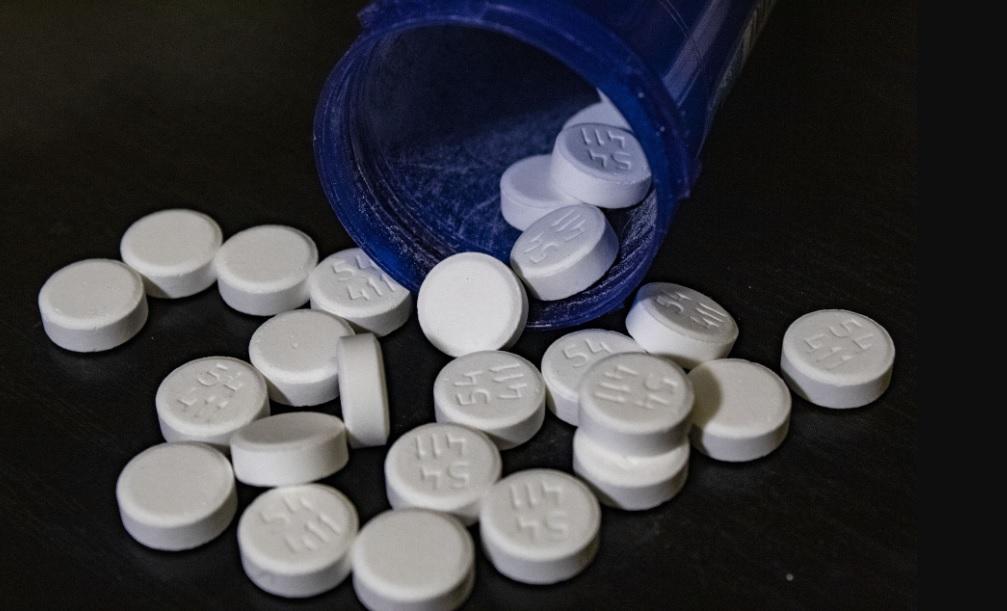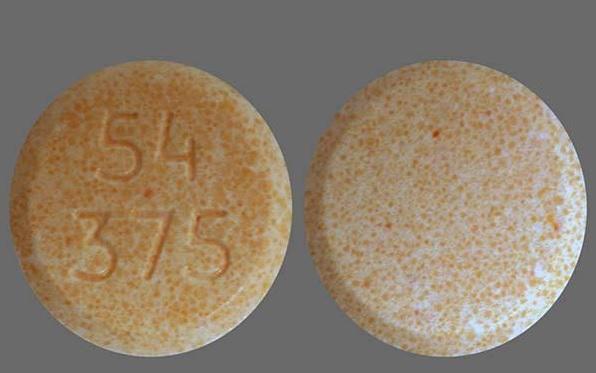What Is Subutex Pill?
Subutex is a prescription medication that is commonly used to treat opioid addiction. It contains active buprenorphine and is available in 8mg dosage (subutex 8mg). Although Subutex and Suboxone are similar, they have some key differences.
Suboxone Vs Subutex
Subutex contains only buprenorphine, while Suboxone contains both buprenorphine and naloxone. If you are looking for Subutex doctors near me, it’s important to note that you must find a licensed healthcare provider to prescribe this medication. It’s recommended to search for a Subutex doctor near me or a Subutex clinic near me to ensure that you receive proper care.
Additionally, if you are considering Subutex treatment, it’s essential to understand the medication’s potential side effects and the risks of abuse. Some common Subutex side effects include headache, nausea, and constipation. In some cases, Subutex abuse can lead to addiction, respiratory depression, and overdose.
However, Subutex can be an effective tool in opioid addiction recovery when used properly under the guidance of a licensed medical professional. If you’re interested in Subutex treatment, ask your Subutex doctor about the availability of Subutex generic options.
What Is The Difference Between Suboxone And Subutex?
Subutex and Suboxone are two medications that are commonly used in the treatment of opioid addiction. Both medications contain the active ingredient buprenorphine, a partial opioid agonist that works by binding to the same receptors in the brain that opioids like heroin, fentanyl, or oxycodone bind to. However, there are some differences between Subutex and Suboxone.
Subutex medication is available in pill form and contains only buprenorphine. It was the first medication approved by the US Food and Drug Administration (FDA) to treat opioid addiction. Because it doesn’t contain naloxone, Subutex can be easier to obtain and more affordable for some people. However, it also has a higher risk of being abused.
Suboxone, on the other hand, is a combination medication that contains both buprenorphine and naloxone. Adding naloxone makes it less likely to be abused, as naloxone can cause withdrawal symptoms if the medication is misused by crushing or injecting. Suboxone comes in the form of a film or a tablet that dissolves under the tongue.
Whats The Difference Between Subutex And Suboxone?
The main difference between Subutex and Suboxone is the presence of naloxone in Suboxone. Naloxone is an opioid antagonist that can reverse the effects of opioids and can also cause withdrawal symptoms if a person misuses opioids. This added component of Suboxone makes it less likely to be abused, but it can also be more expensive and harder to obtain.
Another difference between Subutex and Suboxone is their use during pregnancy. Subutex has been used to treat opioid addiction during pregnancy for many years, and studies have shown that it is generally safe for both the mother and the fetus. However, Suboxone has a higher risk of causing withdrawal symptoms in newborns and may require more careful monitoring.
In conclusion, while Subutex pills and Suboxone tablets share many similarities, the two have some important differences. The primary difference is the presence of naloxone in Suboxone, which makes it less likely to be abused but may also make it more difficult to obtain. It’s essential to discuss with your healthcare provider the difference between Subutex and Suboxone and which medication is the best choice for you.
Subutex Side Effects
Subutex is a medication used to treat opioid addiction, but like any medication, it can cause side effects. Some of the potential Subutex side effects include:
- Headache.
- Nausea.
- Vomiting.
- Constipation.
- Sweating.
- Insomnia.
- Fatigue.
- Back pain.
- Withdrawal symptoms if not taken as prescribed.
Less common side effects of Subutex can include:
- Dizziness.
- Blurred vision.
- Slowed breathing.
- Confusion.
- Weakness.
- Skin rash.
- Severe allergic reaction.
It’s important to note that while Subutex can be a useful tool in opioid addiction recovery, it does have the potential to be abused. Misusing Subutex can lead to dependence, addiction, respiratory depression, and overdose.
Taking Subutex is crucial as a healthcare provider directs and promptly reports any side effects to your doctor. If you experience severe side effects or an allergic reaction, seek emergency medical attention immediately.

Skip To:
Learn More:
- Subutex Pill Uses, Withdrawal, Side Effects & Abuse
- How Long Does Subutex Stay in Your System?
- Subutex vs Suboxone, What’s The Difference Between Them?
- Suboxone Addiction
- Suboxone Detox
- Suboxone Withdrawal Psychosis
- Does Suboxone Raise Your Blood Pressure?
- Suboxone Side Effects Sexually
- Suboxone Half Life
- Prescription Pill Detox Program
Get Help. Get Better. Get Your Life Back.
Searching for Accredited Drug and Alcohol Rehab Centers Near You?
Even if you have failed previously and relapsed, or are in the middle of a difficult crisis, we stand ready to support you. Our trusted behavioral health specialists will not give up on you. When you feel ready or just want someone to speak to about therapy alternatives to change your life call us. Even if we cannot assist you, we will lead you to wherever you can get support. There is no obligation. Call our hotline today.
(844) 597-1011Popular Subutex Pill FAQs
-
Where Can I Go To Get Prescribed Subutex?
To get prescribed Subutex, you must find a licensed healthcare provider to prescribe this medication. You can search for Subutex doctors near me or Subutex clinics near me to find a provider to help you.
-
What is the Subutex Dosage?
The Subutex dosage typically starts at 2 to 4mg and may be increased as needed, up to a maximum of 24mg daily.
-
What’s The Difference Between Suboxone And Subutex?
The primary difference between Suboxone and Subutex is the presence of naloxone in Suboxone. Naloxone is an opioid antagonist that can reverse the effects of opioids and can also cause withdrawal symptoms if a person misuses opioids. Subutex contains only buprenorphine, while Suboxone contains both buprenorphine and naloxone.
-
What are the Side Effects Of Subutex?
Some common Subutex side effects include headache, nausea, vomiting, constipation, sweating, insomnia, and fatigue. If not taken as prescribed, less common side effects can include dizziness, blurred vision, slowed breathing, confusion, weakness, skin rash, severe allergic reaction, and withdrawal symptoms.
-
What’s The Difference Between Suboxone Vs Subutex In Pregnancy?
Subutex has been used to treat opioid addiction during pregnancy for many years, and studies have shown that it is generally safe for both the mother and the fetus. However, Suboxone has a higher risk of causing withdrawal symptoms in newborns and may require more careful monitoring.
-
How To Get Subutex?
To get Subutex, you will need a prescription from a licensed healthcare provider authorized to prescribe this medication. You can search for Subutex doctors near me or Subutex clinics near me to find a provider to help you.
-
What Does Subutex Look Like?
Subutex is a small, white, hexagonal tablet with the number “8” on one side and an arrow on the other.
-
Can You Snort Subutex? Snorting Subutex
No, you should not snort Subutex. Snorting Subutex can lead to serious health risks, including overdose, respiratory depression, and addiction.
-
What is Vernon Subutex?
Vernon Subutex is a novel by the French author Virginie Despentes. It tells the story of a former record store owner who becomes homeless and must navigate the streets of Paris. It has no direct relation to the medication Subutex.
-
Is it Hard to Find Subutex Clinics Near Me?
The availability of Subutex clinics may vary depending on your location. However, you can search for Subutex clinics near me to find licensed providers to prescribe this medication.
Subutex Drug Facts
Subutex Overview
Subutex is a medication used to treat opioid addiction. It contains the active ingredient buprenorphine, which is a partial opioid agonist. This means that it can activate the same receptors in the brain as other opioids, but to a lesser extent, helping to reduce cravings and withdrawal symptoms.
Subutex is taken as a sublingual tablet placed under the tongue to dissolve. While Subutex can be effective in treating opioid addiction, it can also cause side effects and has the potential for abuse and addiction. It should only be taken as directed by a healthcare provider who is licensed to prescribe it.
Side Effects of Subutex
Subutex is a medication used to treat opioid addiction, but like many medications, it can cause side effects. Common side effects of Subutex include headache, nausea, vomiting, constipation, sweating, insomnia, and fatigue. If not taken as prescribed, less common side effects can include dizziness, blurred vision, slowed breathing, confusion, weakness, skin rash, severe allergic reaction, and withdrawal symptoms. These side effects may vary in severity and may require medical attention.
Sings and Symptoms of Subutex Abuse
The signs and symptoms of Subutex abuse can include:
- Taking higher doses than prescribed.
- Using Subutex more frequently than prescribed.
- Crushing, snorting, or injecting Subutex.
- Seeking Subutex from multiple healthcare providers.
- Continuing to use Subutex even when it’s no longer needed for medical purposes.
- Spending a lot of time thinking about Subutex or obtaining it.
- Neglecting responsibilities at home, school, or work due to Subutex use.
- Experiencing withdrawal symptoms when not using Subutex.
- Engaging in risky behaviors while under the influence of Subutex, such as driving or operating heavy machinery.
- Using Subutex despite negative consequences to personal relationships, finances, or legal problems.
If you or someone you know is exhibiting any of these signs or symptoms, it’s important to seek help from a healthcare provider or addiction specialist. Subutex abuse can lead to addiction and other negative health outcomes, but recovery is possible with the right treatment and support.
Subutex Abuse Statistics
Subutex abuse is a serious issue affecting individuals who struggle with opioid addiction. Misusing this medication can lead to addiction, overdose, and other negative health outcomes. Understanding the prevalence and patterns of Subutex abuse can help healthcare providers and policymakers develop effective strategies to prevent and address this problem. In this article, we will explore the latest Subutex abuse statistics, including information on the demographics of those affected, the rates of abuse, and the consequences of Subutex misuse.
30,135
Emergency department visits related to buprenorphine (the active ingredient in Subutex) increased from 3,161 in 2005 to 30,135 in 2010.
Source: SAMHSA
637,000
In 2019, approximately 637,000 individuals aged 12 or older misused buprenorphine products (including Subutex) in the past year.
Source: NSDUH
27.4%
Among individuals seeking treatment for opioid addiction, 27.4% reported misusing buprenorphine (including Subutex) in the past year.
Source: Journal of Addiction Medicine

Get Your Life Back
Find Hope & Recovery. Get Safe Comfortable Detox, Addiction Rehab & Dual Diagnosis High-Quality Care.
Hotline(844) 597-1011Subutex Withdrawal

Subutex use can be beneficial in treating opioid addiction but can also be dangerous when misused or abused. One of the major risks of Subutex abuse is the potential for addiction and withdrawal. Buprenorphine Subutex, including the generic Subutex 8mg, can cause physical dependence over time, resulting in withdrawal symptoms if the medication is stopped abruptly.
Withdrawal from Subutex can be severe and may include symptoms such as nausea, vomiting, diarrhea, abdominal pain, insomnia, anxiety, and depression. In some cases, the symptoms can be so severe that they lead to relapse or overdose. Injecting Subutex also carries additional risks, including the potential for infectious disease transmission and other health complications.
In addition to the physical risks of Subutex withdrawal and abuse, there are social and economic consequences. Subutex abuse can lead to financial difficulties, legal problems, and strained personal relationships. It can also increase the risk of overdose, which can be fatal.
It’s essential to seek professional help and support when withdrawing from Subutex or managing addiction. Healthcare providers and addiction specialists can offer medication-assisted treatment, counseling, and other resources to help individuals safely manage withdrawal and reduce the risk of relapse.
First-class Facilities & Amenities
World-class High-Quality Addiction & Mental Health Rehabilitation Treatment
Rehab Centers TourRenowned Addiction Centers. Serene Private Facilities. Inpatient rehab programs vary.
Addiction Helpline(844) 597-1011Proven recovery success experience, backed by a Team w/ History of:
15+
Years of Unified Experience
100s
5-Star Reviews Across Our Centers
10K
Recovery Success Stories Across Our Network
- Low Patient to Therapist Ratio
- Onsite Medical Detox Center
- Comprehensive Dual-Diagnosis Treatment
- Complimentary Family & Alumni Programs
- Coaching, Recovery & Personal Development Events
Subutex Vs Methadone
Subutex and methadone are medications used in medication-assisted treatment (MAT) to help individuals with opioid addiction manage their withdrawal symptoms and cravings. While they have some similarities, there are also several differences between Subutex and methadone.
One of the key differences between Subutex and methadone is their active ingredients. Subutex contains buprenorphine, while methadone contains methadone hydrochloride. Additionally, Subutex is available as a generic medication, while methadone is only available as a brand-name drug.
Another difference between Subutex and methadone is the way they are administered. Subutex is a sublingual tablet dissolved under the tongue, while methadone is typically administered as a liquid or tablet that is swallowed.

There are also differences in the potential for abuse and overdose between Subutex and methadone. Subutex has a lower overdose risk than methadone, especially at higher doses. The orange Subutex tablet is designed to reduce the risk of abuse by making it difficult to crush or dissolve the tablet for injection or snorting.
The choice between Subutex and methadone for MAT depends on individual factors such as addiction severity, medical history, and personal preferences. Healthcare providers can help determine which medication best suits each individual and offer appropriate treatment and support.
World-class, Accredited, 5-Star Reviewed, Effective Addiction & Mental Health Programs. Complete Behavioral Health Inpatient Rehab, Detox plus Co-occuring Disorders Therapy.
CALL(844) 597-1011End the Addiction Pain. End the Emotional Rollercoaster. Get Your Life Back. Start Drug, Alcohol & Dual Diagnosis Mental Health Treatment Now. Get Free No-obligation Guidance by Substance Abuse Specialists Who Understand Addiction & Mental Health Recovery & Know How to Help.
We Level Up Subutex Pill Dual Diagnosis Treatment
The definition of dual diagnosis (also referred to as co-occurring disorders) can differ between institutions. However, it is generally described as the specific treatment of someone diagnosed with a substance use disorder and a mental health disorder simultaneously. Treating dual-diagnosis clients is a critical aspect of our inpatient treatment experience because co-occurring disorders are strongly correlated with instances of substance abuse.
Creating a treatment plan that addresses the physical aspects of withdrawal, the psychological connection with drug use, and managing underlying mental health disorders is part of setting clients up for success. A thorough mental health analysis identifies possibilities for treatment. Meeting with mental health counselors and medical care providers means access to behavioral therapy and medication treatment. At our dual diagnosis treatment center, We Level Up can implement the highest quality of care.
We recognize the fragile complexities of how mental and substance abuse disorders can influence others and sometimes result in a vicious cycle of addiction. That’s why we offer specialized treatment in dual-diagnosis cases to provide the most excellent chance of true healing and long-lasting recovery.
Accepting that you may be living with a mental illness can be challenging. However, treating the presenting substance abuse case can be magnitudes easier once properly diagnosed and treated. Only a properly trained medical professional can diagnose these underlying conditions. If you believe you are suffering from a disorder alongside addiction, we urge you to seek a qualified treatment center to begin your journey to recovery. Call We Level Up detox center today.
Experience Transformative Recovery at We Level Up Treatment Centers.
See our authentic success stories. Get inspired. Get the help you deserve.
Start a New Life
Begin with a free call to an addiction & behavioral health treatment advisor. Learn more about our dual-diagnosis programs. The We Level Up Treatment Center Network delivers recovery programs that vary by each treatment facility. Call to learn more.
- Personalized Care
- Caring Accountable Staff
- World-class Amenities
- Licensed & Accredited
- Renowned w/ 100s 5-Star Reviews
We’ll Call You
Prescription Drug Abuse & Subutex Pill Informative Video
Jen’s Addiction Recovery Testimonial
“I wanted my life back. I was a shell of a person. I wanted to be trusted, I wanted relationships back that I lost, mainly my children and family. It started innocent enough, I got into a car accident and then I got kind of sucked into the whole, you know, medication issue with the pills. And before I knew it, I was in a cloud. I was sucked in by addiction and with my mind, I kept thinking it was OK because a doctor was prescribing this for me, a doctor was giving me this, a doctor was giving me that.
So, I didn’t think I was doing anything wrong. Level Up supports my family and my relationships with my family and they’ve helped me grown as a person. When I first started there, I was so intimidated and kind of scared, you know? But, they’ve taught me, they’ve kind of taught me how to come into my own. And then, you know, when I get the call at the middle of the day from my twenty-one-year-old daughter, just to say ‘I love you, Mom.’, that’s amazing.”
Jen’s Addiction Recovery Testimonial
Search We Level Up Subutex Pill Resources
Sources
- Substance Abuse and Mental Health Services Administration (SAMHSA): https://www.samhsa.gov/
- U.S. Food and Drug Administration (FDA): https://www.fda.gov/
- National Institute on Drug Abuse (NIDA): https://www.drugabuse.gov/publications/research-reports/medications-to-treat-opioid-addiction/how-do-medications-to-treat-opioid-addiction-work
- Centers for Disease Control and Prevention (CDC): https://www.cdc.gov/
- National Alliance of Advocates for Buprenorphine Treatment (NAABT): https://www.naabt.org/faq_answers.cfm?ID=16
- National Council on Alcoholism and Drug Dependence (NCADD): https://www.ncadd.org/about-addiction/addiction-update/buprenorphine-suboxone-vs-subutex
- Substance Abuse and Mental Health Services Administration (SAMHSA) Buprenorphine Practitioner Locator: https://www.samhsa.gov/
- American Society of Addiction Medicine (ASAM): https://www.asam.org/resources/publications/magazine/read/article/2017/05/30/what-s-the-difference-between-suboxone-and-subutex
- National Library of Medicine – MedlinePlus: https://medlineplus.gov/druginfo/meds/a605002.html
- U.S. Department of Health and Human Services (HHS): https://www.hhs.gov/


